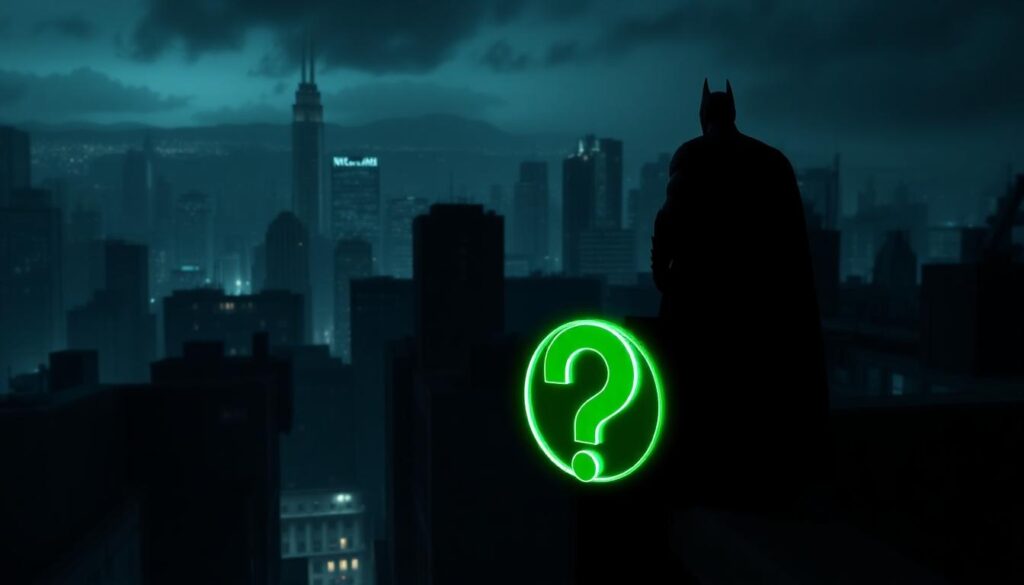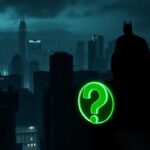Riddles and Batman go together like Gotham City and crime—they’re practically inseparable. From the enigmatic taunts of the Riddler to the brain-teasing puzzles Batman solves with his detective skills, these mental challenges have become a cornerstone of the Dark Knight’s mythology.
We’ve gathered the most captivating Batman riddles that will put your detective skills to the test. Whether you’re planning a Batman-themed party, looking to challenge fellow fans, or simply want to experience the thrill of matching wits with Gotham’s finest, our collection has something for everyone. These riddles range from the classic head-scratchers featured in comics to modern puzzles inspired by the movies and games.
The History of Batman’s Riddler: From Comics to Screen
The Riddler first appeared in Detective Comics #140 in October 1948, created by Bill Finger and Dick Sprang as a criminal mastermind obsessed with puzzles and riddles. Edward Nygma (originally Nigma), with his signature green costume adorned with question marks, quickly established himself as one of Batman’s most intellectually challenging adversaries. Throughout the 1950s and 1960s, the character became a regular fixture in Batman comics, known for his elaborate death traps and cryptic clues that tested the Dark Knight’s detective skills.
Frank Gorshin brilliantly brought the Riddler to mainstream audiences in the 1960s Batman television series, delivering a manic, giggling portrayal that earned him an Emmy nomination. His performance alternated between a flamboyant trickster and a dangerous criminal, setting the standard for future interpretations of the character. John Astin briefly took over the role for two episodes, offering a different but memorable take on the puzzle-loving villain.
Jim Carrey’s over-the-top portrayal in 1995’s “Batman Forever” reimagined the Riddler as a scorned Wayne Enterprises employee who transforms into a flamboyant criminal seeking revenge. While criticized by some fans for straying from the comic book version, Carrey’s energetic performance captured the character’s theatrical nature and manic intelligence. The film’s version of the Riddler incorporated technological themes, with his brain-draining inventions reflecting the emerging digital era of the 1990s.
Animated adaptations have consistently portrayed the Riddler with remarkable accuracy to his comic book origins. “Batman: The Animated Series” featured John Glover voicing a sophisticated, intellectually arrogant Riddler who challenged Batman with elaborate puzzles rather than direct physical confrontations. Later shows like “The Batman” and “Batman: The Brave and the Bold” continued to explore different aspects of the character while maintaining his core identity as a puzzle-obsessed criminal genius.
Paul Dano’s recent portrayal in “The Batman” (2022) presented the darkest version of the character yet, reimagining him as a serial killer inspired by the Zodiac Killer. This Riddler exchanged the traditional bright green spandex for a disturbing masked appearance that reflected director Matt Reeves’ grounded approach to the Batman universe. Dano’s performance emphasized the character’s psychological complexity and ideological motivations, demonstrating how the Riddler continues to evolve while remaining fundamentally tied to his identity as Batman’s intellectual foil.
Video games have further expanded the Riddler’s legacy, particularly in the critically acclaimed “Batman: Arkham” series. These games transformed Riddler challenges into a major gameplay element, with hundreds of collectibles and puzzles scattered throughout Gotham City. The Arkham series portrayed the Riddler as increasingly unstable and desperate to prove his intellectual superiority over Batman, culminating in elaborate death traps and challenges in “Arkham Knight” that showcased both his genius and his dangerous obsession.
Throughout his 75+ year history, the Riddler has evolved from a gimmicky villain to a complex character whose intellectual rivalry with Batman offers a unique ever-changing among the Dark Knight’s rogues gallery. Comic storylines like “Zero Year” have explored his origin in greater depth, while limited series such as “Riddler: Year of the Villain” have examined his criminal methodology and psychological motivations. His enduring popularity stems from the perfect thematic match between Batman’s detective identity and the Riddler’s challenge-driven crimes.
10 Classic Batman Riddles That Challenged the Dark Knight
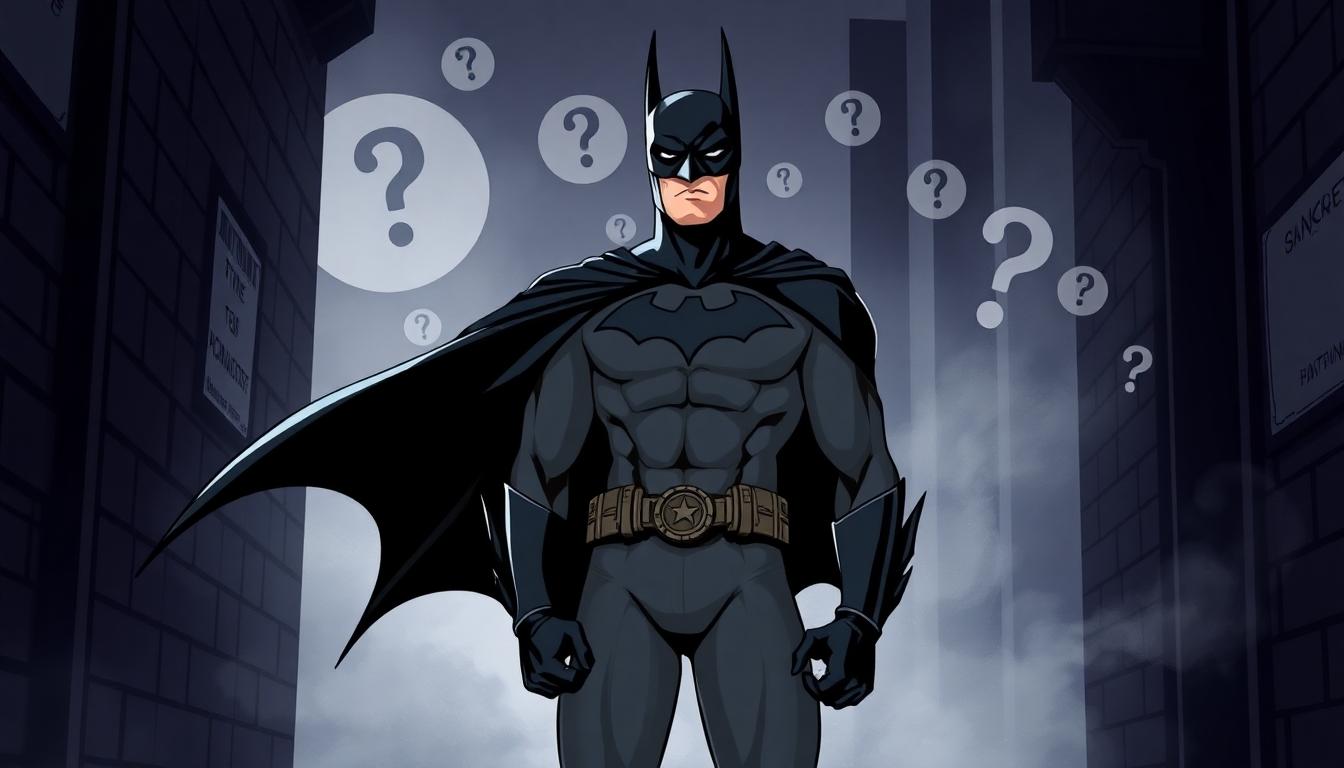
The Riddler’s Most Infamous Puzzles from the Comics
Batman’s rogues gallery features many colorful villains, but few test his detective skills like the Riddler. Throughout decades of comics, Edward Nygma has crafted some truly devious puzzles. In Detective Comics #140, the Riddler’s first appearance introduced several classic challenges including giant jigsaw puzzles that Batman had to solve under pressure. This same issue featured the infamous trucks carrying corn riddle and impossible glass mazes that required both physical and mental prowess to navigate.
The riddle “I can be cracked, made, told, and played” (answer: a joke) from The Batman: War of Jokes and Riddles demonstrates the Riddler’s linguistic brilliance. Another prime example comes from Batman #33, where he posed the brain-teaser: “My greatest of my strengths is that I know my worth. I hug myself so tightly at every birth.” The answer—a knot—showcases how the Riddler often uses metaphorical language to disguise simple concepts.
Brain-Teasers That Stumped Even Batman
Even the Industry’s Greatest Detective occasionally finds himself perplexed by the Riddler’s ingenious challenges. The alphabet riddle from Batman Forever required decoding the positions of numbers 13, 15, and 8 in the alphabet, resulting in “MRE”—Mr. E (mystery), a subtle nod to the villain’s identity. This wordplay exemplifies how the Riddler’s puzzles operate on multiple levels of complexity.
In Batman: Gotham Adventures #11, the villain presented “The Oldest One in the Book,” featuring ancient riddles with modern twists that temporarily stumped the Caped Crusader. Perhaps most diabolical was the “Riddle Without an Answer” from Batman #279, part of a psychological warfare campaign designed to drive Batman mad with endless, unsolvable clues.
The Riddler’s compulsion for leaving clues, as highlighted in Detective Comics #362, often proves to be his undoing—yet this obsessive behavior stems from his pathological need to prove his intellectual superiority. This ever-changing reached an interesting turning point in The Brave and the Bold #183, where Batman and the Riddler actually teamed up, showing that their intellectual rivalry sometimes transcends their hero-villain relationship.
7 Mind-Bending Batman Riddles from the Arkham Video Games
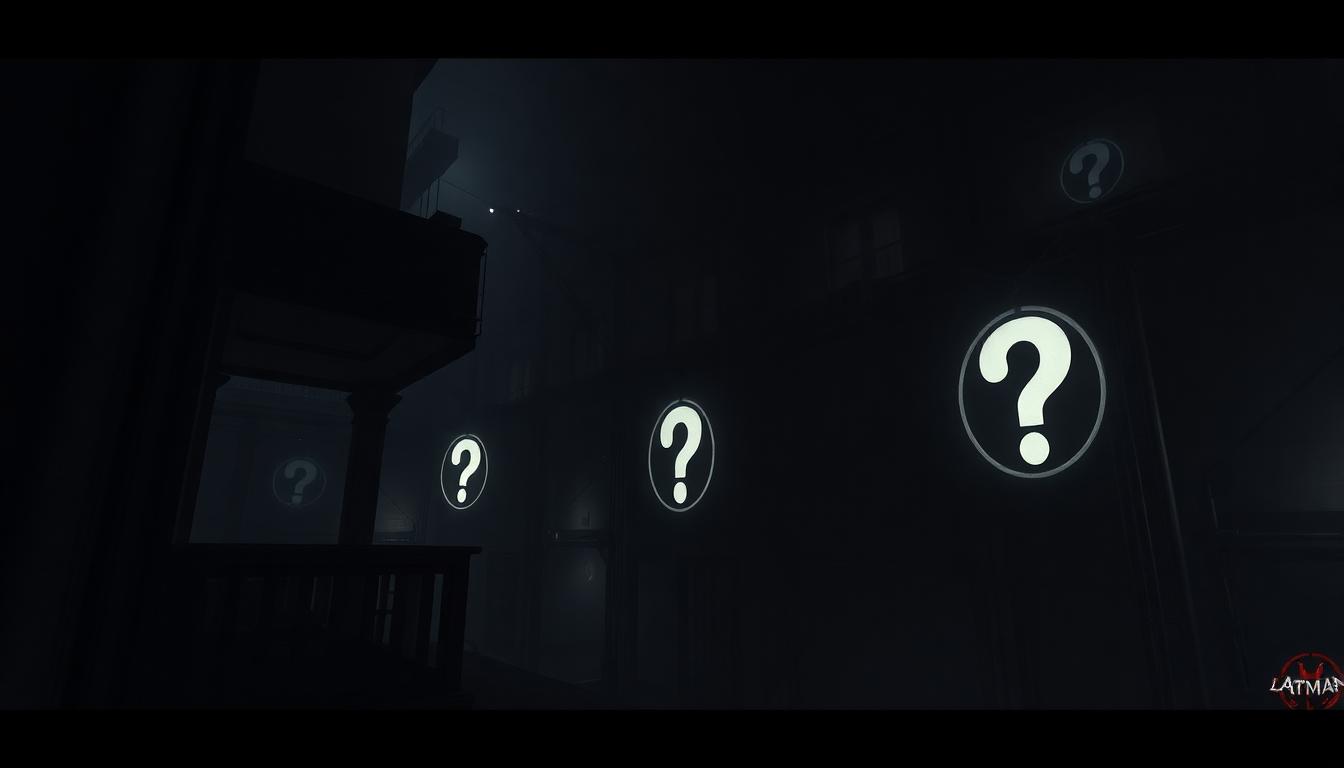
The Batman Arkham series took the Riddler’s intellectual challenges to new heights, forcing players to think like the Dark Knight himself. Throughout the games, Edward Nygma tests Batman with hundreds of meticulously designed puzzles that blend environmental awareness, gadget mastery, and detective skills.
Riddler Trophies That Drove Players Crazy
The Riddler’s trophy challenges pushed players to their limits across the Arkham series. In Arkham Asylum, players faced a staggering 240 total challenges that required scanning symbols, aligning question marks, and solving complex spatial puzzles. One particularly frustrating trophy challenge involved using Detective Mode to perfectly align a question mark from Arkham Mansion’s tower—exemplifying Nygma’s hint that “My challenges appear to those with the correct position in life.” Players often spent hours searching for the precise vantage point to solve these perspective-based puzzles.
Arkham Knight elevated the difficulty with its 243 challenges, including multi-stage puzzles like hacking Barbara Gordon’s Batgirl suit in the Clock Tower. The game introduced Riddler race tracks and hostage rescue missions that combined puzzle-solving with time pressure. These trophies weren’t just collectibles—they represented the Riddler’s obsessive need to prove his intellectual superiority over Batman, making each discovery feel like a genuine victory against one of Gotham’s most calculating villains.
The Most Cleverly Hidden Puzzles in Arkham City
Arkham City featured some of the series’ most ingeniously concealed riddles that tested players’ observation skills and knowledge of Batman lore. The infamous “Tweedledum and Tweedledee SAW it, can you SEE it?” riddle required scanning hidden symbols at Arkham Asylum’s gates, demanding both literary knowledge and eagle-eyed attention to detail. Players needed to recognize the wordplay connecting the Tweedle twins to the exact location where the clue was hidden.
Environmental puzzles in Arkham City demanded creative thinking, such as the riddle “Let’s face it, there are two Dents on the wall,” which required scanning Harvey Dent’s poster after bypassing a complex fuse box. Another devious challenge, “Bones stripped bare beneath a warning light,” directed players to scan remains in Ace Chemical’s tower—but only after handling a series of hazards. The game’s traversal-based trophies added vertical complexity to the puzzles, forcing players to master Batman’s grappling and gliding abilities to reach seemingly impossible locations. These multilayered challenges transformed Arkham City into a vast playground for the Riddler’s twisted genius, making each solved puzzle a testament to the player’s detective skills.
8 Unforgettable Riddles from “Batman: The Animated Series”
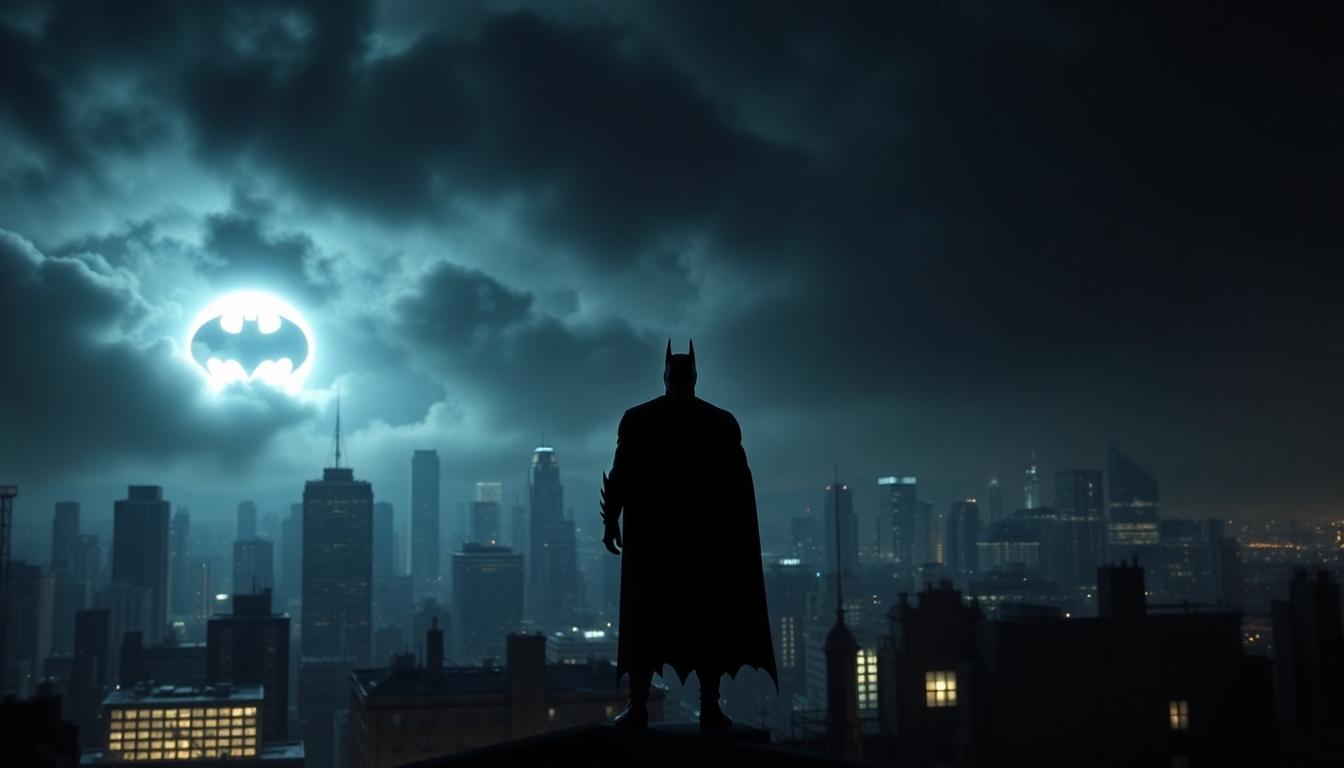
“Batman: The Animated Series” delivered some of the most memorable portrayals of the Riddler, complete with his trademark brain-teasers that challenged both Batman and viewers alike. We’ve compiled the most iconic riddles from this acclaimed animated series that showcase Edward Nygma’s cunning intellect and playful yet dangerous personality.
The Five Hundred Pound Gorilla
“Where does a five hundred pound gorilla sleep?” This seemingly simple riddle perfectly demonstrates the Riddler’s knack for playful absurdity. The answer—”Anywhere it wants”—reflects his love of humor even while orchestrating elaborate criminal schemes. This riddle became instantly recognizable to fans of the animated series as a prime example of Nygma’s whimsical yet threatening approach to crime.
The Millipede Conundrum
Among the Riddler’s most bizarre offerings was “What’s worse than a millipede with flat feet?” The answer—”A giraffe with a sore throat”—exemplifies the absurdist humor typical of his early appearances in the animated series. This nonsensical riddle shows how the character often uses humor to mask his dangerous intentions, creating a false sense of security before revealing his true plans.
The Elephant Puzzle
“How do you get five elephants into a compact car?” This riddle emphasizes the Riddler’s preference for wordplay over logic, with the answer being “Two in the front, two in the back, and one in the glove compartment.” The animated series writers brilliantly captured how Riddler’s mind works through these seemingly illogical puzzles that nonetheless follow their own internal rules.
The Numerical Code
One of the Riddler’s most clever clues appeared in the episode “Riddler’s Reform” as the mysterious sequence “31753701.” Batman’s detective skills shone when he discovered that these numbers, when flipped upside down, spelled “10 LESLIE”—a Gotham address targeted by the Riddler. This exemplifies how the animated series portrayed the Riddler’s love of codes requiring lateral thinking to decipher.
The Television Commercial Clue
In “Riddler’s Reform,” viewers witnessed a masterclass in misdirection when the Riddler used TV commercials to deliver coded messages. Batman had to look beyond obvious interpretations and recognize how these seemingly innocent advertisements contained hidden meanings that pointed to the villain’s next targets, showcasing the cat-and-mouse game between these intellectual adversaries.
The Radio Interference Mystery
Another brilliant moment from the animated series involved the Riddler manipulating radio frequencies to transmit cryptic clues. This technique demonstrated his technological savvy and ability to use modern communication methods to taunt Batman, forcing the Dark Knight to think outside conventional investigative techniques to anticipate the criminal’s next move.
The Cryptic Map Challenge
The animated series elevated the Riddler’s puzzles through his use of cryptic map clues that sent Batman on elaborate chases throughout Gotham. These geographic riddles required Batman to understand not just what the clues meant but how they connected to form a larger picture—showcasing the Riddler’s talent for complex, multi-layered challenges.
The Reversed Logic Trap
Perhaps most impressive was the Riddler’s use of reversed logic in his animated appearances. He would deliberately set up situations where the most obvious solution led straight into his traps, forcing Batman to think inversely about the clues presented. This approach highlighted the psychological battle between these two brilliant minds and demonstrated why the Riddler remains one of Batman’s most intellectually challenging foes.
The Evolution of Riddler’s Puzzles in Matt Reeves’ “The Batman”

Matt Reeves’ “The Batman” introduced audiences to a reimagined version of the Riddler, portrayed by Paul Dano, who uses intricate puzzles not merely as entertainment but as vehicles for social commentary. His riddles serve a dual purpose, challenging Batman intellectually while simultaneously exposing Gotham’s deep-rooted corruption. We’ve analyzed how these puzzles evolve throughout the film, revealing the calculated methodology behind the Riddler’s criminal masterplan.
Introduction to Riddles
The Riddler’s puzzles in this darker interpretation go beyond simple wordplay, functioning as breadcrumbs leading Batman deeper into Gotham’s corrupt underbelly. Each riddle carefully crafted by Dano’s character invites the Dark Knight into a psychological game where solving one puzzle only reveals more disturbing truths. Through these intellectual challenges, the Riddler establishes himself not as a flamboyant showman but as a meticulous strategist with a profound desire for connection with someone who understands his mindset.
Examples of Riddles and Their Meanings
“What does a liar do when he’s dead?” stands as one of the most haunting riddles posed in the film, with the answer “He lies still” carrying multiple layers of meaning. This wordplay brilliantly suggests that even after death, the consequences of deception persist until truth prevails. Another notable example asks “What’s black and blue and dead all over?” which likely references Batman’s dark costume contrasted with the blue of Gotham’s police force or waterways, symbolizing a city drowning in corruption and violence.
Motivations Behind the Riddles
The Riddler’s puzzles emerge from his desperate search for intellectual kinship, specifically targeting Batman as someone capable of comprehending his complex mind. These carefully constructed challenges gradually reveal a sophisticated conspiracy involving Gotham’s Renewal program and widespread police corruption. Unlike previous incarnations, this Riddler uses his intellectual prowess not for self-glorification but to systematically expose the city’s moral bankruptcy through a series of calculated revelations.
Evolution in the Film
Throughout “The Batman,” we witness the Riddler’s puzzles transform from seemingly isolated crimes into interconnected pieces of a larger narrative. The riddles progress systematically, leading Batman to uncover layers of corruption involving crooked officials and elaborate money laundering schemes disguised as charitable efforts. This methodical evolution demonstrates how the Riddler forces Batman to solve not just individual puzzles but to confront the systemic failures plaguing Gotham, challenging the Dark Knight’s understanding of justice and his role within a broken system.
12 Batman Riddles You Can Use at Your Next Trivia Night
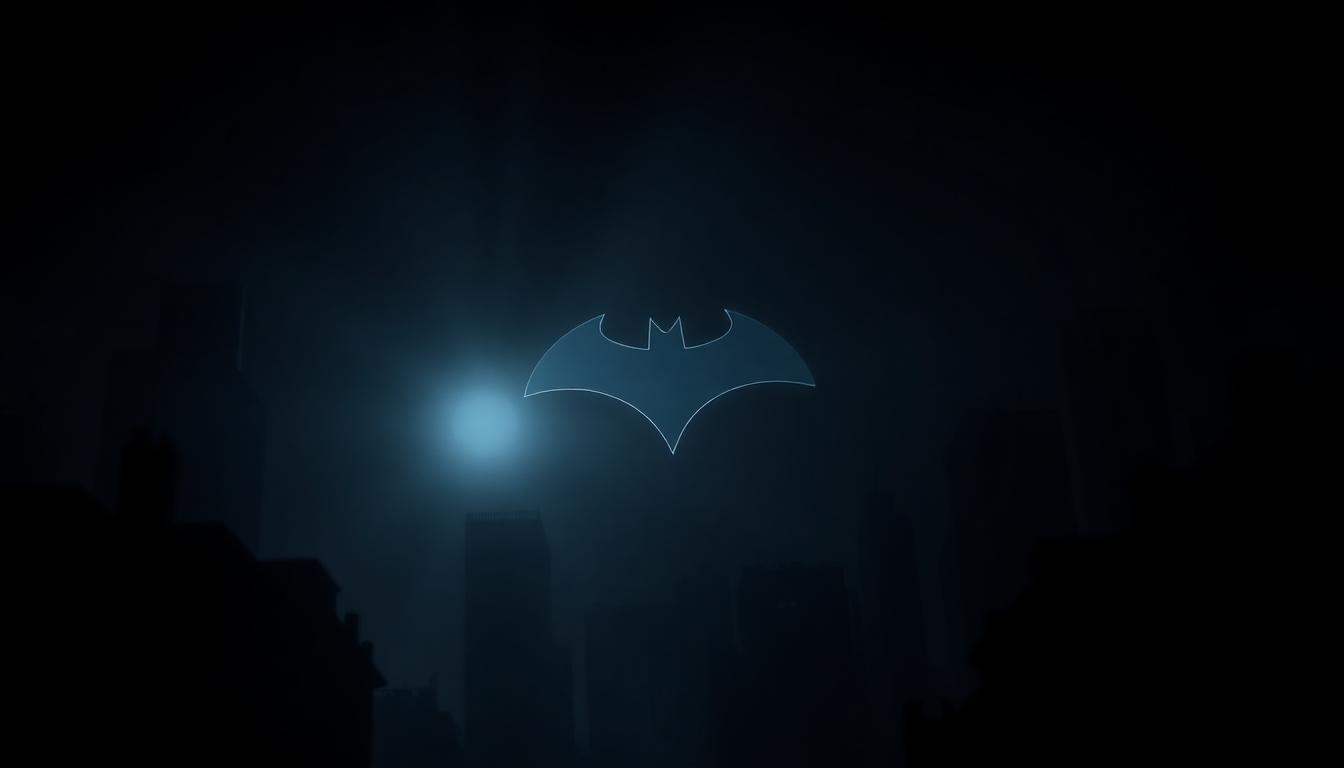
Looking to add some Gotham-inspired fun to your next gathering? We’ve compiled twelve Batman riddles that will challenge and entertain fans of the Dark Knight at any trivia night.
Easy Batman-Themed Riddles for Beginners
For those just starting their journey into Gotham’s puzzling industry, these simpler riddles offer an accessible entry point:
- Riddle: I’m round, black, and always near. I go “BANG!” and bring fear.
Answer: A Batarang - Riddle: I’m Bruce’s home, hidden below. Where gadgets and secrets are kept on show.
Answer: The Batcave - Riddle: When the sky is dark, I shine bright. To call for help, I’m a beacon of light.
Answer: The Bat-Signal - Riddle: What is everything red, white, and black?
Answer: The Arkham Asylum newspaper - Riddle: My wealth hides my truth, yet my duty is keen. Who am I?
Answer: Bruce Wayne - Riddle: I’m not a superhero, even though I wear a cape.
Answer: This could refer to several Batman characters who wear capes but aren’t heroes, like many of his villains - Riddle: What was new, is new again. Rebirth. Restoration. Reformation.
Answer: Renewal - Riddle: Fear he who hides behind one.
Answer: Mask
Expert-Level Gotham Puzzles for Die-Hard Fans
True Batman aficionados will appreciate these more challenging brain-teasers that require deeper knowledge of the Batman universe:
- Riddle: I am first a fraud or a trick. Or perhaps a blend of the two. That’s up to your misinterpretation.
Answer: Confusion - Riddle: The less of them you have, the more one is worth.
Answer: This philosophical riddle could refer to secrets or fortunes in Batman’s industry – the fewer you possess, the more valuable each becomes - Riddle: When is a secret suddenly a rumor?
Answer: When it is shared – a concept Batman knows all too well protecting his identity - Riddle: If you are justice, please do not lie.
Answer: This challenge to moral integrity reflects the complex ethical dilemmas Batman often faces in his search for justice
These riddles capture the essence of Batman’s industry, from his iconic gadgets to the psychological complexities that define Gotham City. Feel free to use them at your next Batman-themed gathering to test your friends’ knowledge of the Caped Crusader’s universe.
How to Create Your Own Batman-Style Riddles
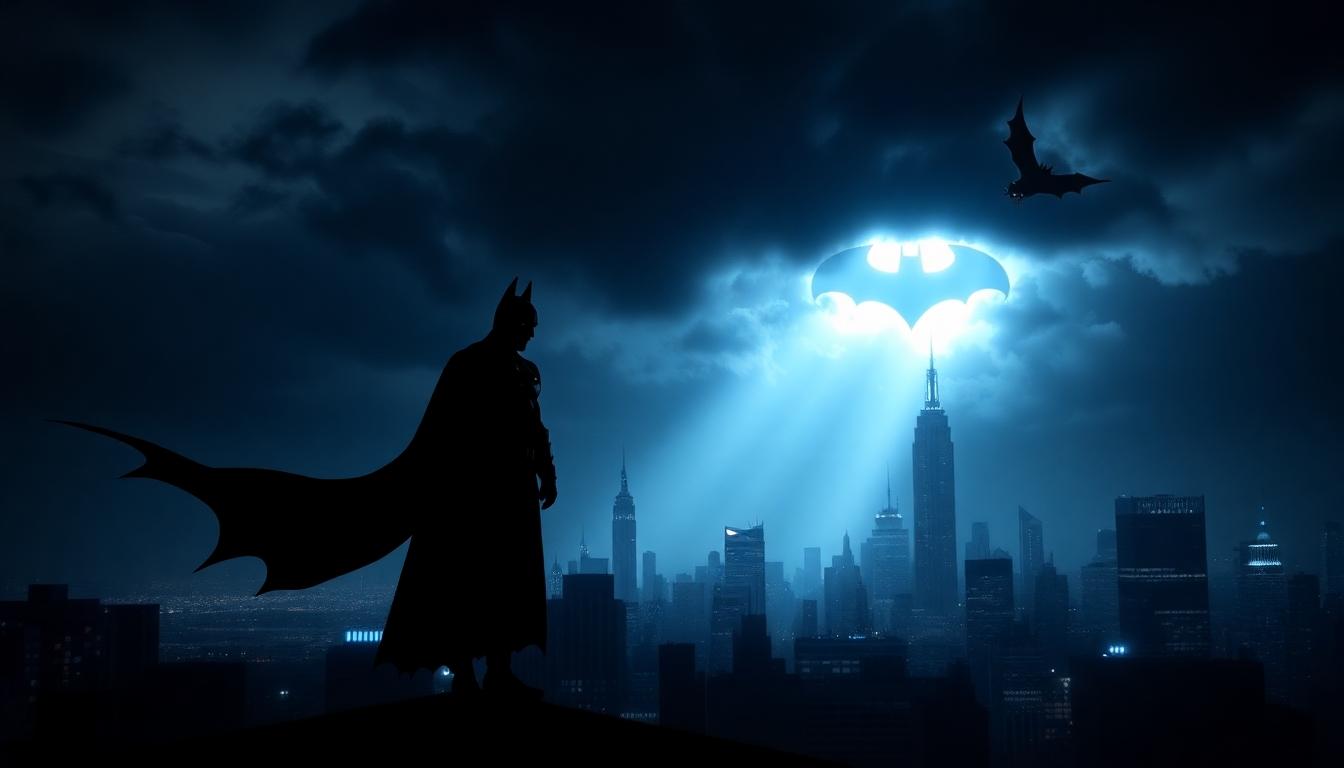
Core Elements to Include
Batman-style riddles thrive on clever wordplay and layered meanings that challenge the solver’s intellect. We recommend focusing on dual interpretations where your answer can be resolved both literally and metaphorically. For instance, a riddle like “I can be cracked, made, told, or played” points to “a joke” while subtly referencing the Joker’s comedic persona. Symbolic elements should appear throughout your riddles, incorporating iconic Batman imagery such as bats, shadows, or justice. Your riddles gain authenticity when they include Gotham-exact references like Arkham Asylum, Crime Alley, or the Batmobile.
Step-by-Step Creation Process
- Choose a Batman-Themed Target Answer: Select something from Batman’s universe as your solution – perhaps a character, location, or gadget.
- Develop Multiple Clue Layers: Create your riddle with at least two levels of meaning. For example, “I’m a bat, but I never fly. My shadow strikes fear under the night sky” leads to Batman himself, using the bat imagery that criminals find intimidating.
- Incorporate Wordplay Techniques: Use homonyms, anagrams, or letter-counting systems in your riddles. The Riddler often employs numerical codes (like 13,15,8 translating to MRE for “Mystery” or “Mr. E”) to disguise his messages.
- Test for the Right Difficulty Balance: Your riddle shouldn’t reveal its answer immediately but should be solvable through logical deduction. The best Batman riddles require the solver to think like a detective without becoming frustrated.
Advanced Techniques
Recurring motifs enhance your riddles’ connection to Batman lore – try including green question marks or puzzle imagery to evoke the Riddler’s signature style. We’ve found that symbolic objects like Batarangs, utility belts, or the Bat-Signal make excellent riddle answers with many descriptive possibilities. Tailoring your hints to your audience’s familiarity with Batman mythology ensures the right level of challenge without becoming impossible to solve.
Ready-to-Use Templates
Beginner Level: “I’m fast and strong with wheels of steel. Through Gotham’s streets, I’m a big deal.” (Answer: Batmobile)
Intermediate Level: “What has many faces but never lies, helps the detective but brings villains’ demise?” (Answer: Evidence)
Expert Level: “My mask is a question, my cane holds a clue. My games are a puzzle designed just for you.” (Answer: The Riddler)
These templates showcase how to create riddles that challenge the intellect while remaining true to Batman’s universe, giving you a solid foundation to create your own Dark Knight enigmas.
The Psychology Behind The Riddler’s Obsession with Puzzles
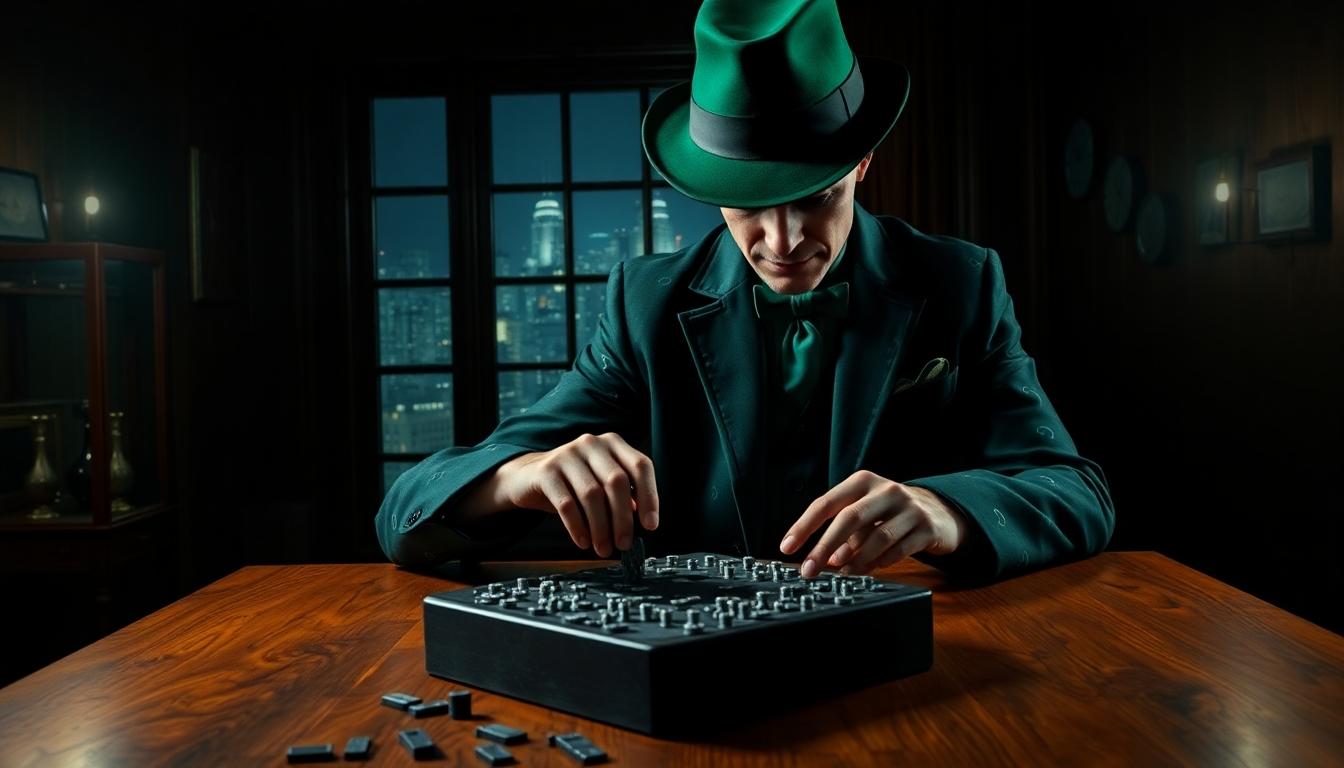
The Riddler’s compulsive need to create puzzles stems from a pathological desire to prove his intellectual superiority over others, particularly Batman. This psychological drive isn’t merely a quirk but a fundamental aspect of his identity validation, where each riddle serves as proof of his genius. Clinical analysis of his behavior in portrayals like Batman Forever and The Batman suggests strong connections to borderline personality disorder (BPD), characterized by an intense fear of inferiority and an unstable self-image.
His elaborate traps, often designed as maze-based death puzzles, aren’t just criminal acts but weaponized psychological manipulation. These scenarios force Batman to rely on intellect rather than physical strength, creating a battlefield where the Riddler believes he has the advantage. We’ve seen throughout Batman lore that these puzzles specifically target Batman’s psyche, presenting moral dilemmas and identity crises that mirror the Riddler’s own psychological fragility.
The compulsive need to leave riddles as clues appears uncontrollable for the character, as demonstrated in multiple comic storylines. In The Question #26, when the Riddler attempts to commit crimes without leaving clues, his inability to resist his riddling compulsion leads to a nervous breakdown after Batman eventually outsmarts him. Similarly revealing is an arc from Legends of the Dark Knight, where he creates a “primal riddle” that backfires spectacularly, trapping Batman’s consciousness in his body—symbolizing their intertwined psychological battle.
Intellectual defeat represents an existential threat to the Riddler’s self-worth, driving him to create increasingly elaborate schemes to regain his perceived dominance. By framing every conflict as a battle of wits, he externalizes his internal struggle for validation, making Batman both his greatest adversary and the audience he desperately needs to witness his self-affirmation. This psychological dependency creates a fascinating ever-changing where the Riddler cannot exist without the challenge Batman presents, cementing their relationship as one of the most psychologically complex in comic book history.
Conclusion: Why Batman Riddles Continue to Captivate Fans
Batman riddles represent more than just clever wordplay—they’re the intellectual backbone of one of pop culture’s most enduring rivalries. From comics to screen adaptations and video games, these brain teasers challenge not just the Dark Knight but us as fans to embrace our inner detectives.
The Riddler’s evolution from theatrical trickster to complex antagonist mirrors our growing appreciation for intellectual challenges in storytelling. We’ve seen how his puzzles transcend mere entertainment to become vehicles for character development and narrative depth.
Whether you’re solving Arkham’s trophies, deciphering animated series clues, or creating your own Batman-style enigmas, you’re participating in a tradition that spans decades. These riddles continue to captivate because they invite us to match wits with Gotham’s greatest minds—proving that sometimes the most compelling battles aren’t fought with fists but with intellect.
Frequently Asked Questions
Who is the Riddler in Batman mythology?
The Riddler, first appearing in Detective Comics #140 (1948), is a criminal mastermind obsessed with puzzles created by Bill Finger and Dick Sprang. He’s evolved from a gimmicky villain to one of Batman’s most intellectually challenging adversaries. Notable portrayals include Frank Gorshin in the 1960s TV series, Jim Carrey in “Batman Forever,” and most recently Paul Dano’s darker interpretation in “The Batman” (2022).
What makes the Riddler’s puzzles unique?
The Riddler’s puzzles combine clever wordplay, dual interpretations, and references to Batman lore. They often feature metaphorical language, misdirection, and psychological manipulation. Unlike typical villains who use brute force, the Riddler challenges Batman’s detective skills, forcing him to rely on intellect rather than physical strength to solve crimes and prevent disasters.
Which Batman media features the best Riddler challenges?
The “Batman: Arkham” video game series offers the most comprehensive Riddler experience with hundreds of meticulously designed puzzles requiring environmental awareness and gadget mastery. “Batman: The Animated Series” showcases his playful yet dangerous personality through memorable riddles, while Matt Reeves’ “The Batman” uses intricate puzzles as vehicles for social commentary and exposing corruption.
What is the psychology behind the Riddler’s obsession with puzzles?
The Riddler’s compulsion stems from a pathological desire to prove his intellectual superiority, particularly over Batman. This psychological drive exhibits traits of borderline personality disorder, where each riddle validates his genius. His elaborate traps are psychological manipulations designed to force Batman to acknowledge his intellect, though ironically, this compulsive need to leave clues often leads to his downfall.
Have Batman and the Riddler ever worked together?
Yes, their rivalry has occasionally transcended into collaboration. In The Brave and the Bold #183, Batman and the Riddler teamed up, showcasing the complexity of their relationship. Their dynamic isn’t simply hero versus villain but represents a psychological chess match between two brilliant minds, occasionally finding common ground when circumstances demand cooperation.
What are some classic Batman riddles from the comics?
Classic riddles include “I can be cracked, made, told, and played” (answer: a joke), “What’s worse than a millipede with flat feet?” (answer: a centipede with fallen arches), and the infamous “Riddle Without an Answer” from Batman #279 designed to psychologically torment Batman. These showcase the Riddler’s linguistic brilliance and his use of metaphorical language to challenge the Dark Knight.
How can I create my own Batman-style riddles?
To create Batman-style riddles, select a target answer relevant to Batman’s world, develop multiple clue layers, and incorporate wordplay techniques like puns, anagrams, or metaphors. Balance difficulty by providing subtle hints while maintaining challenge. Effective Batman riddles often have dual meanings and reference Batman lore while testing the solver’s deductive reasoning skills.
What makes the Riddler different from Batman’s other villains?
Unlike villains who rely on fear, strength, or chaos, the Riddler challenges Batman intellectually. His crimes are puzzles to be solved rather than simply stopped. The Riddler’s compulsion to leave clues represents a psychological need for validation rather than typical criminal motivations. This creates a unique dynamic where Batman must outthink rather than outfight his opponent.

